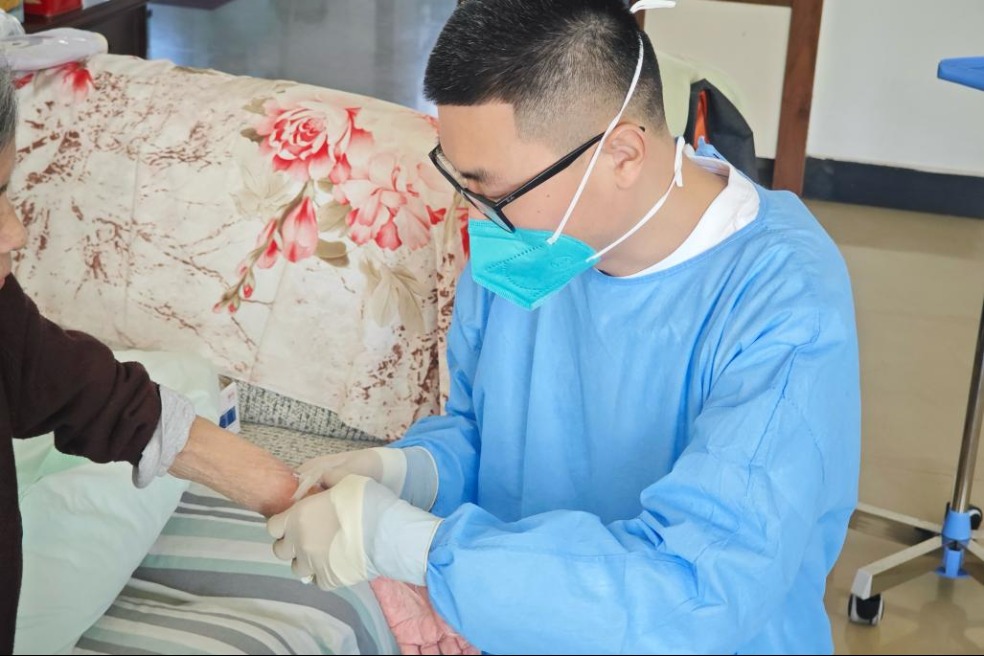Tight control needed for outbreaks, experts say
Novel strain found on mainland, global mutation uncertainties bring concerns


The rise of a new and highly transmissible strain of COVID-19 on the mainland and uncertainties associated with viral mutations globally means that China should maintain tight control of new outbreaks to protect the health of its people, experts and officials said.
Since late September, at least five cities in the provinces of Guangdong and Shandong and the Inner Mongolia autonomous region have reported domestic infections of BF.7, a subvariant of the dominant BA.5 lineage of Omicron, according to local governments.
Li Shujian, deputy director of the Shaoguan Center for Disease Control and Prevention in Shaoguan, Guangdong province, said that BF.7 is even more contagious, more capable of spreading widely and evading immunity compared with other strains.
The mainland reported 374 confirmed domestic infections and 1,386 asymptomatic local infections on Tuesday, according to the National Health Commission.
Wu Zunyou, chief epidemiologist at the Chinese Center for Disease Control and Prevention, said that multiple waves of the COVID-19 pandemic since the novel coronavirus' emergence have been largely driven by viral mutations, mass gatherings and weather conditions.
He said the most likely scenario this winter is to brace for a possible sixth wave of COVID-19 outbreaks.
"The pandemic remains at a high level now, and even without the occurrence of a novel strain, population movement and wintry environments could feed fast transmission of the virus," he said on his personal account on Weibo, a microblogging platform, in late September.
"Based on virus mutations seen in the past three years, the possibility of seeing a new variant cannot be ruled out," he added.
Anthony Fauci, director of the National Institute of Allergy and Infectious Diseases in the United States, also recently urged the public to not let their guard down against new variants and potential case spikes this winter.
"We should anticipate that we very well may get another variant that would emerge, that would elude the immune response that we've gotten from infection and/or from vaccination," he said during an event with the Annenberg Center for Health Journalism at the University of Southern California on Oct 5.
He also encouraged people to receive updated COVID-19 vaccines as soon as possible.
As of Sept 28, China had fully vaccinated 86.2 percent of its elderly population who are particularly vulnerable to the COVID-19 disease, according to official data.
An article published by public health experts in China in mid-September said China's persistent containment of COVID-19 since it emerged nearly three years ago has spared over 99 percent of its 1.4 billion people from exposure to infection.
The dynamic zero-COVID strategy, which calls for prompt action to contain local outbreaks, has earned precious time for the country to develop and deploy diagnostics, vaccines and antivirals, said the article published on China CDC Weekly, an academic platform established by the China CDC.
It said that the remaining unvaccinated groups, including a large share of the elderly and those with chronic illnesses, will likely suffer the most from COVID-19 infections.
- China's defense minister meets French counterpart
- International experts discuss grotto conservation in Shanxi
- Xi addresses opening ceremony of fourth ministerial meeting of China-CELAC Forum
- Xi attends opening ceremony of fourth ministerial meeting of China-CELAC Forum
- Misty pillars create Avatar-like landscape in Zhangjiajie
- Chang'e 5 collected glass beads reveal secrets of Moon's deep interior





































